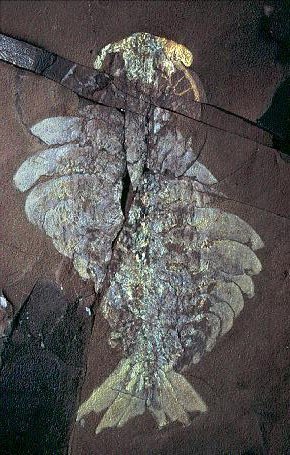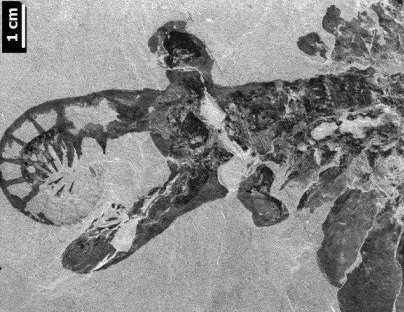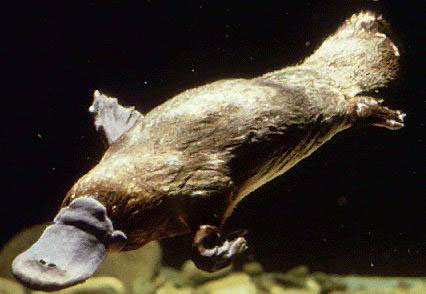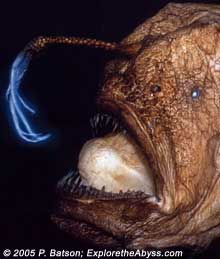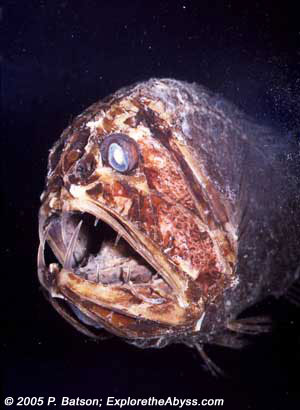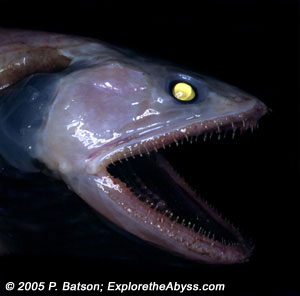Cynic
Well-Known Member
[font=Times New Roman, Times, serif]
 [/font]
[/font]
By David F. Salisbury
Published: February 2, 2005
[font=Times New Roman, Times, serif]T[/font]he star-nosed mole gives a whole new meaning to the term fast food.
A study published this week in the journal Nature reveals that this mysterious mole has moves that put the best magician to shame: The energetic burrower can detect small prey animals and gulp them down with a speed that is literally too fast for the human eye to follow.
It takes a car driver about 650 milliseconds to hit the brake after seeing the traffic light ahead turn red. In only half that time, the star-nosed mole, operating in the Stygian darkness of its burrow, can detect the presence of a tasty tidbit, such as a small insect larva or tiny worm, determine that it is edible and gulp it down.
Most predators take times ranging from minutes to seconds to handle their prey, says Kenneth C. Catania, assistant professor of biological sciences at Vanderbilt, who directed the study of the mole's foraging speed. The only things I've found that even come close are some species of fish, he says.

The secret to the star-nosed mole's impressive foraging ability is the star-shaped set of appendages that ring its nose. Its fleshy star makes the mole one of the oddest looking members of the mammal kingdom. Despite its distinctive appearanceand the fact that it ranges from Canada, down through the Eastern United States as far as Georgiapeople rarely see star-nosed moles because they live only in marshes and wetlands.
Catania, working with laboratory assistant Fiona E. Remple, captured the elusive moles' feeding behavior with a high-speed video camera that records 500 frames per second, more than ten times faster than a normal camcorder. Because they live in darkness, the moles have very poor eyesight. So they continually survey their environment by repeatedly touching the objects around them with their star appendages. Timing the moles' actions, the researchers found that after touching a small piece of food it took them only 230 milliseconds to identify it and eat it.
The researchers were surprised to discover that the unusual mole is not just a super-fast forager, but that it is moving almost at the speed limit set by its brain and nervous system. The star-nosed mole takes about 25 milliseconds to decide whether an object is edible. From this, it takes about 12 milliseconds for a signal to travel from the mole's star appendages to its brain and another five milliseconds for the mole's muscles to respond to signals from its brain.
This leaves only eight milliseconds for the mole's brain to make an identification. Given the split millisecond timing, it is not surprising that it frequently makes mistakes. In a series of trials where the researchers set out worm sushi for the moles, they found that one third of the time the moles actually started to move in the wrong direction and had to suddenly reverse themselves, a sequence that the researchers call a double-take.
The researchers conclude that This inefficient behavior suggests that the moles are operating at, or near, the limit set by the speed which the mole's nervous system can process touch information.

http://exploration.vanderbilt.edu/news/news_mole.htm

By David F. Salisbury
Published: February 2, 2005
[font=Times New Roman, Times, serif]T[/font]he star-nosed mole gives a whole new meaning to the term fast food.
A study published this week in the journal Nature reveals that this mysterious mole has moves that put the best magician to shame: The energetic burrower can detect small prey animals and gulp them down with a speed that is literally too fast for the human eye to follow.
It takes a car driver about 650 milliseconds to hit the brake after seeing the traffic light ahead turn red. In only half that time, the star-nosed mole, operating in the Stygian darkness of its burrow, can detect the presence of a tasty tidbit, such as a small insect larva or tiny worm, determine that it is edible and gulp it down.
Most predators take times ranging from minutes to seconds to handle their prey, says Kenneth C. Catania, assistant professor of biological sciences at Vanderbilt, who directed the study of the mole's foraging speed. The only things I've found that even come close are some species of fish, he says.

The secret to the star-nosed mole's impressive foraging ability is the star-shaped set of appendages that ring its nose. Its fleshy star makes the mole one of the oddest looking members of the mammal kingdom. Despite its distinctive appearanceand the fact that it ranges from Canada, down through the Eastern United States as far as Georgiapeople rarely see star-nosed moles because they live only in marshes and wetlands.
Catania, working with laboratory assistant Fiona E. Remple, captured the elusive moles' feeding behavior with a high-speed video camera that records 500 frames per second, more than ten times faster than a normal camcorder. Because they live in darkness, the moles have very poor eyesight. So they continually survey their environment by repeatedly touching the objects around them with their star appendages. Timing the moles' actions, the researchers found that after touching a small piece of food it took them only 230 milliseconds to identify it and eat it.
The researchers were surprised to discover that the unusual mole is not just a super-fast forager, but that it is moving almost at the speed limit set by its brain and nervous system. The star-nosed mole takes about 25 milliseconds to decide whether an object is edible. From this, it takes about 12 milliseconds for a signal to travel from the mole's star appendages to its brain and another five milliseconds for the mole's muscles to respond to signals from its brain.
This leaves only eight milliseconds for the mole's brain to make an identification. Given the split millisecond timing, it is not surprising that it frequently makes mistakes. In a series of trials where the researchers set out worm sushi for the moles, they found that one third of the time the moles actually started to move in the wrong direction and had to suddenly reverse themselves, a sequence that the researchers call a double-take.
The researchers conclude that This inefficient behavior suggests that the moles are operating at, or near, the limit set by the speed which the mole's nervous system can process touch information.

http://exploration.vanderbilt.edu/news/news_mole.htm





